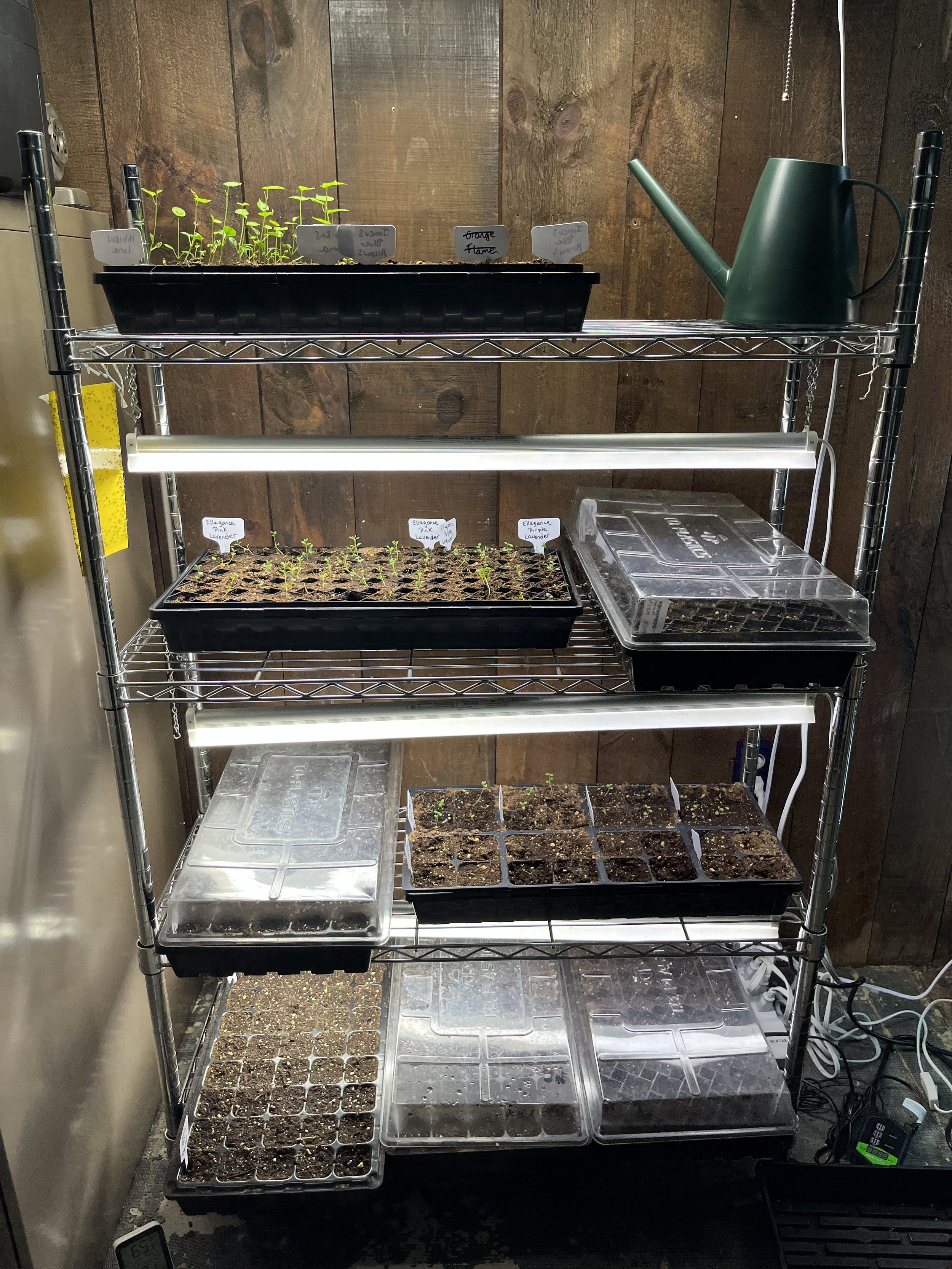5 Seed Starting Tips
Do you dream of starting your own garden plants from seed? But you are slightly terrified that it will be a total failure with dozens of tiny struggling plants that ultimately die? (sorry, that was a bit dramatic)
I am here to help! I love starting seeds and I would love to see you give it a try too!
It is NOT as easy as just throwing some seeds in the dirt.
BUT.
It is an incredibly rewarding process that can be easy once you learn a few basics!
Here are my top tips for seed starting!
1. Start with one ‘easy’ type of seed. Some seeds can be very tricky to start, some are easier. To setup yourself up for success it is best to start with something known to be easy to start. Once you get comfortable with that one plant, you can confidently expand to growing others! I recommend starting with one of these:
Tomatoes
Marigolds
Squash and cucumbers
2. Start your seeds at the right time. It can be tempting to start your seeds very early in the spring. However, for successful and health plants, you want to start them at the right time. It can be confusing to know when to start them, so I created more information on that topic. Read more here.
3. Use a high-quality potting mix. Successful seed starting depends on a good soil. While it’s possible to start seeds in all types of soil, I recommend a high quality organic potting mix. This will set your seeds up for success. Use only ‘new’ potting mix. Reusing soil from last year can introduce pests and diseases. The best option is to visit your local garden supply store and ask them what they recommend for seed starting!
4. Water carefully. Overwatering and underwatering are the two biggest reasons seed starting fails. If you have tried and failed in the past to start seeds, this is probably the reason.
Seeds need even moisture to germinate, but they do not like to be soggy. Aim for a moist soil, but no standing water.
It can be helpful to use a moisture dome or cover to hold in humidity and moisture if your house is very dry. However, you want to take this lid off as soon as the seeds germinate.
Once the seeds germinate you want to slowly start reducing the moisture in the soil and air around the plants.
After the plants have germinated, only water once the surface of the soil starts to dry out.
As the plants continue to grow, you can continue to reduce the amount of water, letting the soil dry out a bit more between each watering.
I’ve killed more plants with too much water, than I have with too little water! When in doubt, water less.
5. Do not give up. I have killed a lot of plants over the years and each year some still die. This is simply part of seed starting! If you kill some seeds, do not give up! Learn from it and try again!
One last thing. You do not need to grow all your plants from seed! You do not even need to start plants from seed AT ALL if you do not want to. You can be an incredible gardener, a totally legitimate gardener, and not start plants from seed. It is totally okay to buy your plants! You can be a great homesteader and buy your plants. There is no rule that says you have to grow your plants from seed.
I love when people give seed starting a try. But it is not for everyone. If it seems too stressful, or if it does not fit your schedule, that is totally okay! If you have cats and kids that want to play in the soil on the shelf, that is okay, maybe in this season of life seed starting is not for you.
That is why I love sharing our plants with you! We offer organically grown heirloom plants with the exact same care we give plants we would put in our own garden. We grow healthy, happy plants for you. We love seed starting and growing plants. We love that we can offer plants for you to pick up and plant in your garden.
I look forward to connecting with you in our greenhouse this spring!
Happy growing,
Abbie – The Heirloom Farmer
